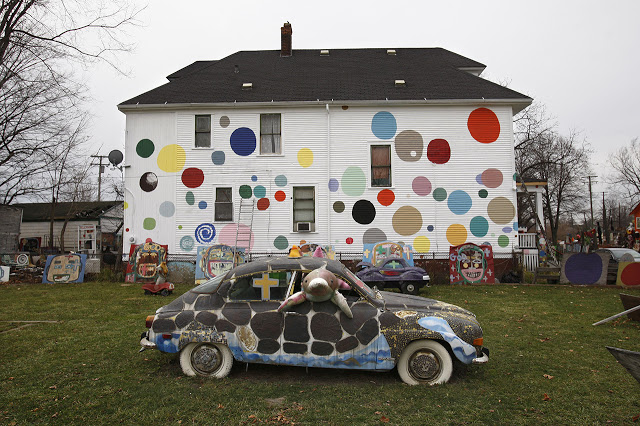Tyree Guyton grew up in a poor neighborhood, messing around with junk, creating his own toys. His Grandpa Sam, who was a house painter, taught him to use paint. When he returned from serving in the army, he found his old neighborhood really rundown, so in 1986 he began what was called the Heidelberg Project, cleaning up and using paint and trash to make things beautiful again.
You can make a house in the sculpture studio out of cardboard.
How will you embellish your house with paint and found and recycled objects?
DAY 1
- Think about what shape you want the front of your house to be.
- Make a detailed plan. Cut it out.
- Raise your hand and show your art teacher your plan.
- With permission, get 2 cardboard pieces to begin making your house.
- Trace house plan on cardboard pieces and cut them out.

DAY 2
1. Get cardboard for sides of house.
2. Measure out pieces, mark and cut cardboard.
3. Get a base and begin to assemble house.4. Remember to use Tabs or L-braces to hold up and connect the walls. Use hot glue SPARINGLY, if you are overusing it, or using it in place of tabs and braces you will have to use ELMERS GLUE. Any windows that you want cut out, mark in pencil for teacher to cut.
















